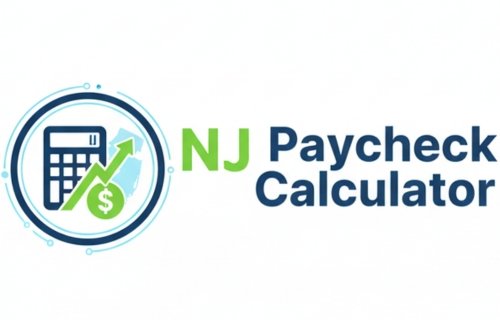NJ Unemployment Tax Calculator
New Jersey Unemployment Tax Calculator – Quickly Determine Your Tax Liability
This guide is designed for employers and employees in New Jersey who need to calculate or understand their state payroll taxes, including unemployment insurance (UI), temporary disability insurance (TDI), and family leave insurance (FLI). This tool helps you accurately determine your tax obligations and ensures compliance with state regulations, saving you time and avoiding costly errors.
Key Features of a Digital Calculator
A quality online calculator simplifies the complex process of figuring out your payroll taxes. Here’s what makes a good one stand out:
- Real-time Rate Updates: The best calculators automatically use the most current rates for the tax year (e.g., 2025 rates). They will update based on the state’s announcements, so you don’t have to manually search for new rates.
- Split Calculations: They should separate employee deductions from employer contributions, giving you a clear breakdown of who pays what.
- Wage Base Awareness: The tool should automatically stop calculating contributions once an employee’s gross wages exceed the annual taxable wage base. This is a crucial feature that prevents over-withholding.
- User-Friendly Interface: The design should be simple and intuitive, letting you get a result quickly without having to be a payroll expert.
Step-by-Step Guide: How to Calculate Your Taxes
Using a calculator for New Jersey unemployment taxes is straightforward. You only need a few key pieces of information.
Step 1: Gather Your Data
Collect the necessary information:
- The employee’s gross wages for the pay period (e.g., weekly, bi-weekly).
- Your specific employer tax rate for unemployment and temporary disability. The state provides this rate to you annually based on your company’s history of claims. New businesses have a set rate.
- The employee’s year-to-date (YTD) wages to check if they’ve reached the taxable wage base.
Step 2: Input the Information
Enter your data into the calculator’s corresponding fields. Be sure to select the correct tax year, as rates and wage bases change annually.
Step 3: Get Your Results
The calculator instantly provides a detailed breakdown of:
- Employee Deductions: The amounts for Unemployment Insurance, Temporary Disability Insurance, and Family Leave Insurance.
- Employer Contributions: The amounts for Unemployment Insurance and the Workforce Development Partnership Fund. Be sure to find your accurate paycheck after federal tax deductions before finalizing any job offers in Atlantic City.
Practical Examples
Let’s see how this works with some real numbers for the 2025 tax year.
- Employee UI & Workforce Development Taxable Wage Base: $43,300
- Employee TDI & FLI Taxable Wage Base: $165,400
Example 1: Calculating for a New Employee
An employee earns $1,500 per week and has earned $3,000 year-to-date. The employer’s UI rate is 2.9825% and the TDI rate is 0.5%.
- Employee Deductions:
- UI: $1,500 x 0.3825% = $5.74
- TDI: $1,500 x 0.23% = $3.45
- FLI: $1,500 x 0.33% = $4.95
- Employer Contributions:
- UI: $1,500 x 2.9825% = $44.74
- TDI: $1,500 x 0.5% = $7.50
- Workforce Development: $1,500 x 0.1175% = $1.76
You can see net income after local and state deductions
Example 2: Calculating for a High-Earning Employee
An employee earns $2,000 per week and has already reached the UI taxable wage base but not the TDI or FLI one. Their YTD earnings are $45,000. The employer’s UI rate is 2.9825% and the TDI rate is 0.5%.
- Employee Deductions:
- UI: $0 (since YTD wages exceed the $43,300 wage base)
- TDI: $2,000 x 0.23% = $4.60
- FLI: $2,000 x 0.33% = $6.60
- Employer Contributions:
- UI: $0 (since YTD wages exceed the $43,300 wage base)
- TDI: $2,000 x 0.5% = $10.00
- Workforce Development: $0 (since YTD wages exceed the $43,300 wage base)
Frequently Asked Questions
Q1: What is the taxable wage base for New Jersey unemployment taxes?
The taxable wage base is the maximum amount of an employee’s wages that is subject to certain payroll taxes each year. In 2025, the taxable wage base for Unemployment Insurance is $43,300 for both employers and employees.
Q2: What is the difference between UI and TDI in New Jersey?
UI (Unemployment Insurance) provides temporary financial benefits to workers who have lost their jobs through no fault of their own. TDI (Temporary Disability Insurance) provides benefits to workers who are temporarily unable to work due to a non-work-related injury or illness.
Q3: Can an employer or employee stop paying unemployment taxes?
No, contributions to these state programs are mandatory for all covered employers and employees in New Jersey. The contributions are based on payroll and are required by law to fund the state’s social safety net programs.
Q4: Why do my employer and employee rates seem different from others?
Your specific employer tax rate for UI and TDI is based on your company’s experience rating, which reflects your history of unemployment claims. A company with fewer claims may have a lower rate than a company with more frequent claims.
Q5: Are family leave insurance contributions mandatory?
Yes, in New Jersey, employees are required to contribute to the Family Leave Insurance (FLI) program through payroll deductions. This program provides benefits for employees who need to take time off to care for a new child or a sick family member.
Q6: How do I know my official employer contribution rate?
The New Jersey Department of Labor and Workforce Development (NJDOL) sends each employer an official “Notice of Employer Contribution Rates” annually. You can also access this information through the NJDOL’s Employer Access portal.
